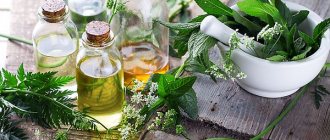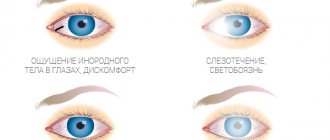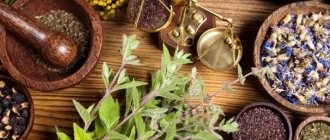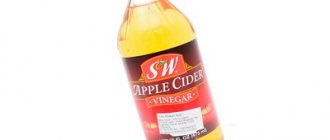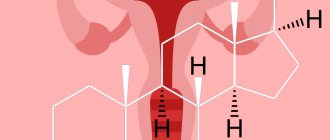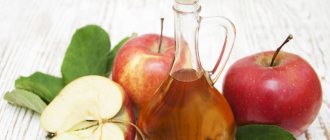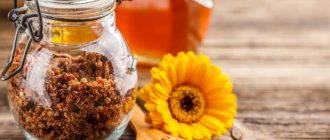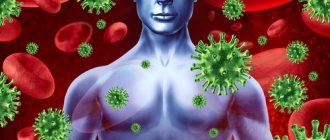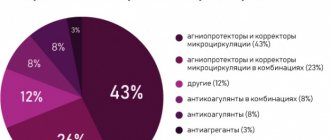Traditional medicine is gradually gaining its place under the traditional sun, and many of its methods, remedies and recipes are officially used at certain stages of human treatment and rehabilitation. Not to mention the fact that we ourselves have been using alternative medicine products and recipes for a long time and justifiably.
Let's go through its main reference points, see what we can use in our daily lives, in treating frequent, seasonal diseases, and maintaining our health. Join us!
Basic concepts of traditional medicine
Traditional medicine includes treatment with components of plant and animal origin, as well as the use of techniques based on their origin.
Almost all recipes have been passed down from generation to generation. Often, along with the prepared potion, prayers and incantations were used.
Traditional medicine products include:
- Beekeeping products;
- Plants, herbs;
- Procedures, techniques – massage, acupuncture;
- Extracts – tinctures, juices;
- Products of animal origin – wool, fat;
- Objects of inanimate nature - stones, fruits.
This list can be expanded. But sometimes there are recipes that are dangerous to human life. Therefore, official science does not welcome the use of these recipes and methods for all stages of human recovery.
You can make a pretty impressive list for which traditional treatment helps. Among them:
- Losing weight.
- Cough syndrome.
- Colds.
- Diseases of the gastrointestinal tract.
- Joint pain.
- Women's and men's diseases.
The methods used are different, different for each ailment.
ETHNOSCIENCE
ETHNOSCIENCE
- a body of empirical knowledge accumulated by the people in the process of historical development about the manifestations of diseases, the medicinal properties of plants, animal substances, mineral substances, as well as a number of practical techniques aimed at preventing and treating diseases.
N. m., unlike scientific, was not based on theoretical premises, knowledge of physiology, well-founded ideas about the action of the treatments used. funds. The choice of healing agents and techniques was made empirically.
N. m. arose under the primitive communal system. Treatment First of all, help began to be provided for injuries, poisoning, childbirth, and caring for newborns. A later period included the emergence of certain special techniques for treating diseases with pronounced symptoms (fever, skin lesions, etc.).
Since ancient times, the healing properties of not only a number of products of plant and animal origin, but also mineral waters, and healing properties have been known. mud, climatic factors, massage. Hunting and eating animal meat brought certain ideas about anatomy to N. m. The naive materialistic ideas of primitive man about the surrounding reality and its influence on health and illness coexisted with mythological ones, and later with religious and mystical ones.
Historically, N. m. is closely connected with witchcraft (see); it contains many irrational and harmful means and techniques, including those associated with religious cults.
Within the framework of national medicine, there was a vast area—folk hygiene, which represented the generalized experience of the people in preserving health and working capacity and was expressed in methods of food processing, protection from diseases, including the peculiarities of housing construction, daily routine, etc. n. Confirmed by the experience of centuries, folk gig. knowledge was more substantiated and more rational in nature than that related to the treatment of diseases.
The information accumulated by N. m. was reflected in the works of major doctors of antiquity: Sushruta, Hippocrates, K. Galen, A. Celsus, and later in the works of Ibn Sina and others. In the Middle Ages in the countries of Western Europe, N. m. continued develop and was a source of medical care for the poor classes, especially in rural areas.
In Rus', starting from the era of early feudalism (in Kievan Rus) and later in the Muscovite state, a peculiar “specialization” of folk healers was noted (see Doctor); “bloodletters”, “chiropractors”, “face-to-face” doctors, doctors who treated hernias, etc. stood out.
With the advent of writing, a number of provisions of N. m. began to be written down and distributed in the form of special books - vertograds, herbalists (see Zeleiniki), medical books (see).
B.F. Gruzdev described more than 300 such Russian books dating back to the 16th and 17th centuries.
In the national traditions of a particular country, influences from neighboring or other countries were often traced. Thus, information about Indian and Tibetan medicine and medical medicine from other countries of the East is found in ancient Russian manuscript literature starting from the 11th century.
The natural history of the peoples of Russia was studied by participants in scientific expeditions at the end of the 18th century. P. S. Pallas, J. Gmelin, I. I. Lepekhin, S. P. Krasheninnikov, V. F. Zuev and others.
In the 19th century the founders of domestic clinical medicine M. Ya. Mudrov, S. P. Botkin, G. A. Zakharyin, N. I. Pirogov and others also studied individual therapeutic techniques and medications used by N. m., and in some cases cases, they were introduced into practice with appropriate scientific justification.
Soviet med. science takes everything valuable and rational from the thousand-year experience of N. m., cleansing it of religious and mystical layers.
In particular, the study of plant herbs. means (see Medicinal plants) used in N. m., is carried out at the All-Union Scientific Research Institute of Medicinal Plants and its branches.
See also Medicine.
Bibliography:
Bogoyavlensky N. A. Indian medicine in ancient Russian healing, JI., 1956; aka, Old Russian healing in the 11th-17th centuries, M., 1960, bibliogr.; aka, Domestic anatomy and physiology in the distant past, JI., 1970; Vysotsky N. F. Essays on our traditional medicine, Zap. Moscow archaeological Institute, vol. 11, p. 1, 1911; Gruzdev B.F. Russian handwritten medical books, Leningrad, 1946; Zmeev JI. F. Readings on the medical history of Russia, St. Petersburg, 1896; Kryuchok G. R. Essays on the history of medicine of Belarus, Minsk, 1976, bibliogr.; Oganesyan JI. A. History of medicine in Armenia from ancient times to the present day, parts 1 - 5, Yerevan, 1946-1947; P a l k i n B. Ts. Essays on the history of medicine and healthcare of Western Siberia and Kazakhstan during the period of accession to Russia, Novosibirsk, 1967; Petrov B. D. Essays on the history of domestic medicine, M., 1962; P about in G. Russian folk medicine, St. Petersburg, 1903; Russian D. M. History of general and domestic medicine and health care, M., 1956; S to Orichenko - Ambodik G. G. Hygiene in prehistoric times, St. Petersburg, 1895; F l o r i n s k i y B.M. Russian common herbalists and healers, Kazan, 1879; Ch a r u k o v s k i y A. A. Traditional medicine applied to Russian life and the varied climates of Russia, parts 1 - 5, St. Petersburg!, 1844-1847; Shengelia M. S. History of medicine in Georgia, Tbilisi, 1967; Efendiev I.K. History of medicine in Azerbaijan from ancient times to the 19th century, Baku, 1964, bibliogr.
B. N. Palkin.
Treatment of children and adults
Various methods and means are used to treat children and adults in both traditional and folk medicine. The human body is a complex, highly organized structure. A growing child's body requires some methods, an established adult requires others. Moreover, let’s not forget that practically no two people are identical in terms of the ongoing physiological processes in the body.
For example, taking a course of antibiotics in someone will not cause any significant side effects. For another, this will be a good blow to the body, which will give rise to side effects and possibly illness of other organs. Or, an infusion of herbs will have the most healing effect for one person, but for another there will be no such effect. Therefore, although the general principles of treatment may be the same, the selection of methods and drugs will always be individual and even more so different for children and adults.
Children
The child's body is very vulnerable and sensitive. Therefore, all manipulations should be treated with extreme caution. First of all, allergies, individual intolerances, and side effects may occur. For example, once I gave my 2-year-old daughter tea with honey at night. So her cough reflex opened up - she suffered through fear...
Many herbal formulations are approved for use no earlier than 5-7 years. Most often, in childhood, folk remedies are used for colds, stomach and intestinal problems.
For example, everyone knows the recipe for infant colic: pour a teaspoon of ripe dill seeds into a glass of boiling water. After everything has settled, give a little to the children with warm water.
Or here is a folk recipe for a child with diarrhea, which can be used at any age: pour a teaspoon of pharmaceutical chamomile into a faceted glass of boiling water, leave for a quarter of an hour. After this, let us drink 3 teaspoons 5-7 times a day. Chamomile is a mild herb: it helps with bloating, cough, and other inflammation.
There are also many other recipes that are worth studying and preserving for yourself, resorting to proven publications of traditional medicine remedies and recipes.
Adults
For adults, traditional methods are used mainly for diseases of the heart, blood vessels, joint pain, infertility, and normalization of hormonal balance.
But here, too, caution must be exercised. After all, treatment can have the opposite effect. You should be especially careful if you are prone to allergies, have many chronic diseases, and also during pregnancy.
It should be remembered that many herbs contain toxic substances. Therefore, it is necessary to remember that independent use of folk remedies is good for prevention against known, say, seasonal diseases (colds, flu, boosting immunity, etc.). But if the disease has already taken over the body, then the use of traditional medicine recipes must be agreed upon with a specialist!
Natural remedies or pills?
Author:
ophthalmologist, specialist in evidence-based medicine Oleg Kucheryavenko
2 minutes
1479
The material is published as part of a partnership with the “Medicines for Life” project, dedicated to improving the pharmaceutical literacy of patients.
In fact, the entire world around us is a variety of chemical substances interacting with each other. Plants are also characterized by chemical processes: the process of photosynthesis, nitrogen absorption.
The human body is like a chemical plant in which thousands of chemical reactions take place every second. Our bodies are affected in different ways by millions of molecules, and some substances have an effect without entering into a chemical interaction. For example, cellulose, the chemical basis of plants, is not absorbed in the intestines, but allows it to maintain its contractile function and speed up the passage of food.
“Natural” medicines usually refer to the roots, leaves of plants, buds, tree bark, etc. “Chemical” drugs are obtained from plants (extracts) or are synthesized artificially. It is important to know that both chemical and natural remedies can be equally dangerous. They cause harm when used incorrectly and uncontrolled, or through irresponsible self-medication. Herbal preparations even represent
a greater threat, because many are convinced of the absolute harmlessness of this type of treatment - “there is no chemistry here.” This misconception can cost your health.
Chemical interaction
Herbal products can interact with each other and synthetic drugs. The consequence of such interaction may be a toxic effect. Usually everything happens at the level of the liver, where active metabolism (transformation and destruction) of chemical compounds occurs. One drug can slow down or speed up, weaken or strengthen the effect of another drug. For example, ginseng in combination with warfarin (a drug that reduces blood clots) can increase the effect of the drug and cause bleeding.
Heavy metals
Plants have the ability to accumulate heavy metal compounds, many of which are dangerous to human health. It is worth remembering this when going to collect medicinal herbs in the field - they can be chemically contaminated and are three times dangerous. Harmful substances enter through the roots and leaves of the plant, and are concentrated in the roots and stems. Leaves, fruits or seeds accumulate less heavy metals.
ethnoscience
Traditional medicine recipes are published in newspapers, and books about herbs and medicinal decoctions are discussed on online forums. And no one is embarrassed that in many recipes there is not a word about the dose and side effects, only mentions of the natural power of herbs. There is often advice to use poisonous plants as medicine; for example, fly agaric is recommended to be used externally and internally. The consequences of such treatment can be disastrous. The medical literature describes a series of 10 cases of acute hepatitis due to the use of celandine. Complete recovery was recorded six months after taking the drug. Interestingly, repeated use of celandine by one of the patients led to a relapse of the disease.
Unfortunately, one can only guess how many people suffered from traditional medicine, and how many did not receive proper treatment: many perceive treatment with folk remedies as an alternative (replacement) to traditional medicine. Although complementary (complementary) medicine involves the combined use of traditional methods and folk recipes under the supervision of a doctor, for example, chemotherapy and some types of herbs for cancer. The study of traditional medicine in the United States is carried out by the National Center for Complementary and Alternative Medicine of the Scientific Institute of Health.
Top 10 popular recipes
There are many remedies and recipes in folk medicine, so the most popular ones from different areas are taken here. So, the top 10 recipes from simple ingredients:
1. To stimulate hair growth
A yeast mask with kefir will add shine to your hair and activate its growth. Yeast is a source of vitamin B, and vinegar and kefir will restore normal balance and increase blood circulation. Dilute 15 grams of yeast in 50 ml of warm water. After a quarter of an hour, add a glass of kefir.
Note: for dry hair it is better to use kefir with a fat content of 3.2%, for oily hair - 1%, in other cases it is better to use 2.5%.
Then apply the mixture to your head, put on a plastic bag, and cover the top with a towel. After half an hour, wash everything off. Can be used frequently.
2. For a cold
The cold is the most common seasonal ailment. At the first symptoms, we suggest preparing a useful, and most importantly, pleasant drug. It can be stored in the refrigerator throughout the season. The recipe is such that it will destroy the inflammatory process and help quickly relieve all symptoms.
A large lemon must be peeled and pitted. Cut the remaining pulp into slices. Peel 300 grams of ginger, also divide into slices. Then pass the two ingredients through a meat grinder.
Add a glass of honey to the resulting mass and mix everything thoroughly. You can use it in different ways: either before meals, 1 teaspoon, or add it to tea at night. If for prevention, then once a day is enough, and in case of illness - up to 3-4 times a day.
3. To boost immunity
This is one of the simplest, most accessible recipes. But it must be consumed regularly. Compote or decoction of rose hips. To do this, prepare 300 grams of fresh or dried rose hips, 1 liter of water.
After boiling, wash the berries in water and boil them for another hour. Then it is recommended to infuse it. Delicious tea is ready. Fans can add honey to taste.
4. For stomach diseases
I’ll give you an example of a remedy that I used myself when pills no longer helped. I took the fleshiest leaves of a 3-year-old aloe and kept it in the cold for several days. Then she washed it thoroughly, cut off the thorns, and put it through a meat grinder. Then she mixed the pulp with honey in equal proportions.
The mixture was kept in a cold place. I took a tablespoon before meals for a whole month. It helped!
5. Bronchitis
Quite a popular, proven way to overcome an annoying cough. I have used it several times and given it to my children. I am sure that you, dear subscribers, have been using it for a long time. But it wouldn’t hurt to repeat it.
For a medium-sized black radish, remove the center so that the bottom remains intact. Add honey inside (here everything depends on the depth of the hole), but do not fill it to the brim. When the vegetable comes into contact with honey, juice will be released. Place the radish on a plate and leave it overnight: during this time, a sufficient amount of juice will be released.
You can take it this way: for adults, 4 teaspoons per day will be enough, for children - 2. This tasty medicine is allowed to be taken for up to 14 days. There is no harm, but the benefits are enormous. If you feel that the drug is running out, then add honey, and then change the vegetable.
6. Varicose veins
This is a common disease now, so if you have problems, grab the recipe.
Rarely does anyone have an allergy to potatoes, but they will cope well with swelling and reduce the visibility of bulging veins. We chop fresh potatoes on a grater, then apply them to the affected areas and bandage them. Maintain this position for up to 5 hours.
Note: to cleanse blood vessels, you can take freshly squeezed potato juice orally on an empty stomach.
7. Diabetes mellitus
Of course, if you have diabetes, it is important to follow nutritional standards. But there are foods that will lower your sugar levels. This is what lemon is.
We take two or three lemons, peel them, seeds, and chop them. Then put the crushed lemon in a thermos and fill it with boiling water. The drink should brew for a couple of hours. Then take 100 milliliters up to three times a day.
8. Facial cleansing
A kefir face mask will give combination skin softness, radiance, a healthy complexion, normalize skin balance, and saturate it with vitamins.
The recipe is as follows: take crushed green tea in the amount of three tablespoons, add 2 teaspoons of starch, mix everything, add 3 tablespoons of kefir, 1/2 teaspoons of olive oil. Apply the paste to your face and wash off after 20 minutes. This product can be applied weekly.
9. Colon cleansing
Let's combine business with pleasure: enjoy the delicious Broom salad and cleanse the intestines.
It’s easy to prepare: prepare fresh cabbage, carrots and beets in proportions 3:1:1. Finely chop the cabbage, everything else - on a coarse grater. Mix the chopped vegetables with your hands, add olive or sunflower oil. We enjoy ourselves every day. After the salad, you are allowed to drink only water. This is one of the convenient ways to cleanse.
10. For hemorrhoids
There are plenty of folk remedies for hemorrhoids: ointments, suppositories, teas. But we suggest trying a herbal bath made from a decoction of bay leaves. It will relieve swelling, pain, itching.
Boil 5 liters of water, add 50 medium leaves. Let it brew for about half an hour and pour into a convenient container. As soon as the temperature drops to a comfortable state, we begin the procedure.
Expert opinion
Expert opinion
Marina Gaidaichuk
Specialist - trichologist with 16 years of experience
Ask a Question
Many folk remedies for hair are very effective for strengthening, rapid growth, and getting rid of dandruff. But such means alone cannot solve the problem. It is better to deal with the problem as a whole.
Expert opinion
Vladislav Tkachev
General practitioner
Ask a Question
It is important to know that treatment begins when the diagnosis is correct. And herbalists often begin treatment based on one or two symptoms. There are many identical symptoms and diseases, so this approach, without a confirmed diagnosis, can be harmful.
